Abnormal Skull Shape
Deformed skull
Fetal demise is the most common cause of deformed skull secondary to the compression effect. The severity of deformity can vary from mild Spalding’s sign and overlapping of the cranial sutures to a bizarre head shape. The diagnosis can simply be confirmed by demonstration of the fetal heartbeats. However, a deformed skull shape can be associated with other conditions. The differential diagnoses include:
- fetal demise
- amniotic band syndrome (bizarre and asymmetric cranial shape)
- limb-body wall complex (bizarre and asymmetric cranial shape)
- demineralization disorders
- craniosynostosis (ranging from plagiocephaly to a trilobar or cloverleaf skull)
- cephalocele.
Fig 1, Fig 2, Fig 3
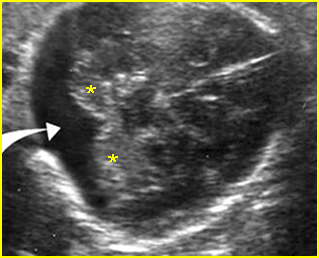
Fig 1: Strawberry-shaped skull Transverse scan of the skull: strawberry-shaped skull with dilated cisterna magna (arrow) (* = cerebellum)
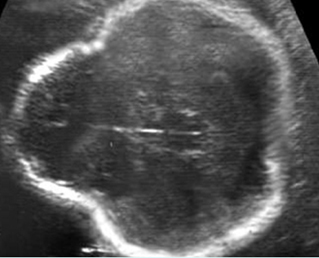
Fig 2: Thanatophoric dysplasia Cross-sectional scan of the skull: Cloverleaf skull; prominent parietal bone
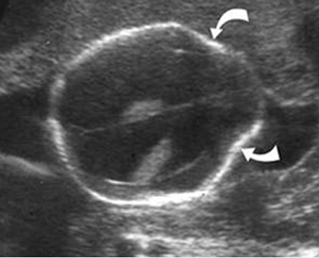
Fig 3: Lemon sign Scalloping of the frontal bones (arrow) with ventriculomegaly in case of spina bifida
Video clips of abnormal skull shape
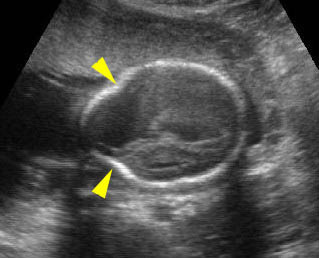
Lemon sign: Indentation of the both frontal bones (arrowhead)
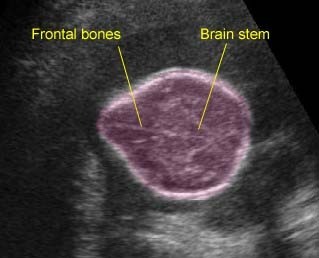
Strawbery-shaped head: Strawberry head shape: the skull shape of a fetus with trisomy 18
Specific abnormalities
Some specific anomalies have a characteristic shape of the head.
Lemon sign: a concave deformity of the frontal bones at the level of the coronal suture, which may be associated with
- normal fetus (1-2% of normal fetuses)
- spina bifida (common)
- occipital cephalocele (rare)
- thanatophoric dysplasia (rare)
- long-term oligohydramnios
Cloverleaf skull (found in 14% of cases of thanatophoric dysplasia)
- thanatophoric dysplasia (most common)
- homozygous achondroplasia
- Apert’s syndrome
- Pfeiffer’s syndrome
- Carpenter’s syndrome
Strawberry head shape (often associated with fetal trisomy 18).

